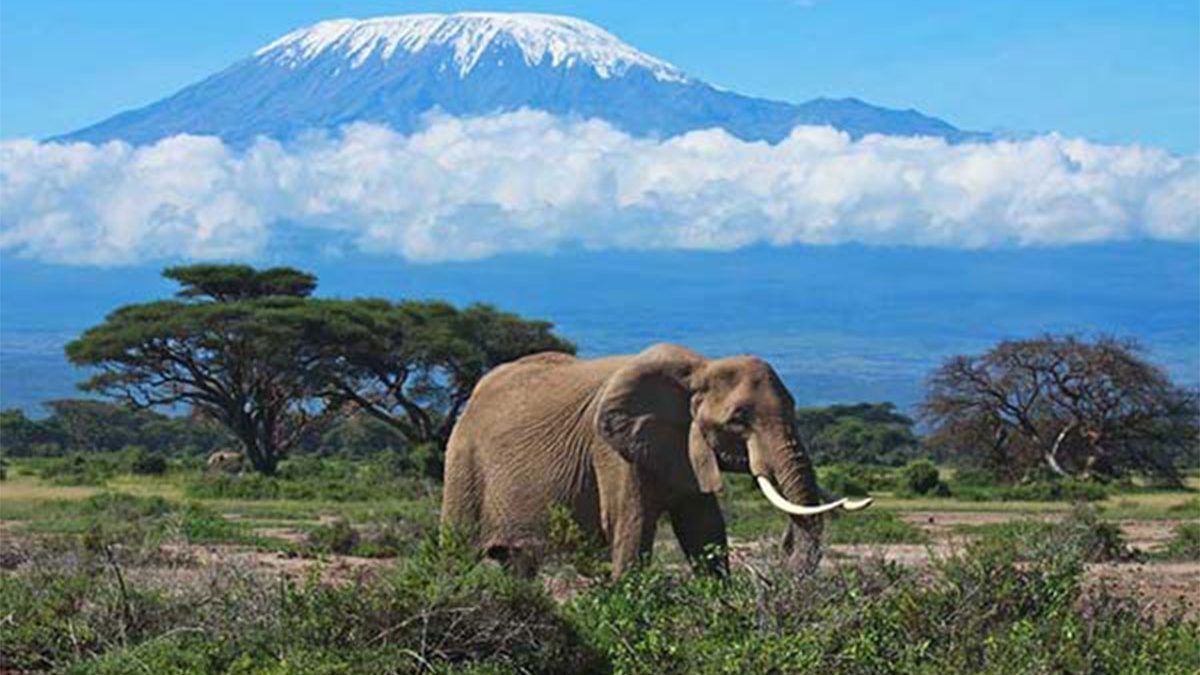
Kilimanjaro National Park is a protected area in northern Tanzania, famous for its iconic centerpiece, Mount Kilimanjaro, the highest peak in Africa. The park encompasses the mountain’s diverse ecosystems, from lush rainforests to alpine deserts, and offers a range of trekking routes to the summit. Visitors can experience breathtaking scenery, unique flora and fauna, and the challenge of reaching Uhuru Peak, the highest point on Kilimanjaro. The park is known for its conservation efforts and is a UNESCO World Heritage Site. It attracts climbers, hikers, and nature enthusiasts from around the world.
About Kilimanjaro National Park
Kilimanjaro National Park, located in northern Tanzania, is a remarkable natural treasure known for its iconic centerpiece, Mount Kilimanjaro. Rising to an elevation of 19,341 feet (5,895 meters), Kilimanjaro is the tallest free-standing mountain in the world and the highest peak in Africa. The park covers an area of approximately 755 square miles (1,960 square kilometers) and is a UNESCO World Heritage Site, primarily established to protect the mountain’s unique ecosystems.
The park’s diverse landscapes include lush rainforests, alpine meadows, and barren volcanic terrain. Each ecological zone is home to distinct flora and fauna. The lower rainforest zone is characterized by towering trees, lush vegetation, and a variety of wildlife such as blue monkeys, colobus monkeys, and a multitude of bird species. As climbers ascend, they pass through the heath and moorland zone, adorned with unique plant species like giant lobelias and groundsels. Finally, the alpine desert zone near the summit offers an otherworldly, barren landscape with little vegetation but stunning views of the surrounding area.
Kilimanjaro National Park offers several trekking routes, each with its own charm and difficulty level, attracting adventurers from all walks of life. Climbers can experience the challenge of reaching Uhuru Peak while taking in breathtaking panoramas along the way. The park’s conservation efforts aim to protect its delicate ecosystems, and climbers are encouraged to follow strict leave-no-trace principles. Kilimanjaro National Park is not only a haven for trekkers but also a sanctuary for biodiversity, making it a must-visit destination for those seeking adventure and natural beauty in Tanzania
Tips to keep in mind when planning your visit Kilimanjaro National Park:
Climbing Mount Kilimanjaro in Kilimanjaro National Park is a challenging and rewarding adventure. Here are seven important tips to consider when planning your trip:
Choose the Right Route:
- Kilimanjaro offers several trekking routes, each with varying levels of difficulty and scenery. Research the routes, taking into account factors like your fitness level, climbing experience, and the number of days you have available. Common routes include the Marangu, Machame, Lemosho, and Rongai routes.
Acclimatization is Key:
- Proper acclimatization is crucial to prevent altitude sickness. Choose a route with a gradual ascent profile and enough days to acclimatize. Ascend slowly, drink plenty of water, and listen to your body. Guides are trained to monitor your health.
Pack Wisely:
- Pack light but don’t forget essentials like warm clothing, a good sleeping bag, sturdy hiking boots, and waterproof gear. Keep in mind that porters carry most of your equipment, so pack only what you need.
Physical Preparation:
- Train and prepare for the climb by improving your cardiovascular fitness and endurance. Regular hikes with elevation gain can help condition your body for the trek.
Choose a Reputable Tour Operator:
- Select an experienced and reputable tour operator with a track record of safety and responsible tourism practices. They will arrange permits, guides, porters, and logistics, ensuring a smoother and safer climb.
Stay Hydrated and Eat Well:
- Drink plenty of water throughout the climb to stay hydrated and combat altitude effects. A balanced diet provided by the trekking company will help maintain your energy levels. Carry your favorite snacks if desired.
Listen to Your Guides:
- Your guides and porters are experienced and knowledgeable. Follow their advice, especially regarding pacing, rest breaks, and safety precautions. They will assist you in making the right decisions for a successful climb.
Bonus Tip: Take your time to enjoy the breathtaking scenery and the unique ecosystems you’ll encounter along the way. Kilimanjaro National Park is not just about reaching the summit but also about experiencing the diverse landscapes, wildlife, and natural beauty of this extraordinary mountain.
Climbing Kilimanjaro is a remarkable adventure, but it’s essential to be well-prepared and prioritize safety. With the right planning and mindset, you can make the most of this once-in-a-lifetime experience while ensuring your health and well-being during the ascent.

Snow-Capped Equator: Despite its location near the equator, Mount Kilimanjaro, which is the centerpiece of the national park, is one of the few places in the world where you can find snow and glaciers on the equator. The peak of Kilimanjaro is permanently covered in ice and snow, providing a stark contrast to the surrounding lush forests and savannahs. It’s a unique geographical phenomenon that makes Kilimanjaro even more captivating and has contributed to its status as the “Roof of Africa.”

